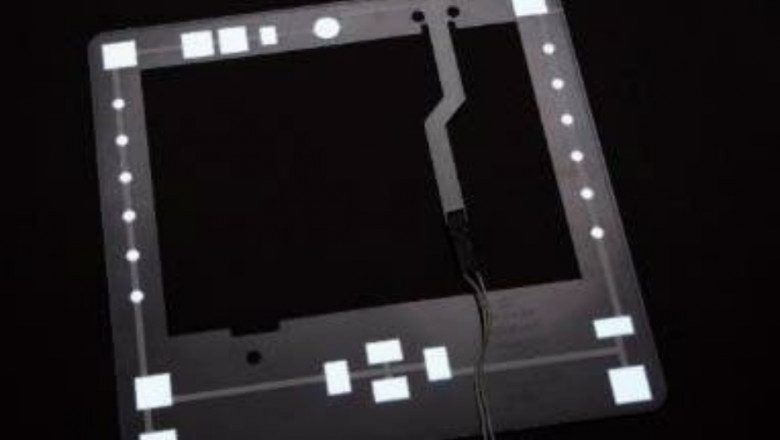views
Using machines to automate tasks isn't just a nice-to-have; it's a necessity. Efficient operations are key, and automated systems play a significant role in achieving that. To keep everything running smoothly, operators use user-friendly control panels that help them monitor and manage the machines. With the growing demand for more tailored approaches, many businesses use custom HMI solutions to ensure their control systems meet specific operational needs. As technology evolves, more businesses seek personalised solutions that fit their particular requirements regarding these control systems.
Understanding HMI Input Systems
HMI is the connection that links people to machines. It includes touchscreens, keyboards, panels, and other input devices. These systems ensure the operator and the machine can communicate as safely as possible.
Key features of modern human-machine interface input devices include:
-
Intuitive touchscreen interfaces
-
Durable materials suitable for harsh environments
-
Customisable layouts and designs
-
Integration with control systems like PLCs and SCADA
Because machines are becoming more complex, custom human-machine interface systems are necessary. Industries need systems that function effectively and are built with certain features, ergonomics, and environments in mind.
Custom HMI Solutions: A Necessity, Not a Luxury
Some HMI units are standard but often do not provide the best performance, long-lasting quality, or a pleasant user experience. Custom human-machine interface systems, however, are built to fit specific needs. All the parts, including layout and how they work, are designed for the job.
Custom HMI systems are ideal for sectors such as:
-
Medical technology
-
Industrial automation
-
Automotive testing
-
Energy and environmental technology
MICHEL ITC has designed and built customised input systems for different needs for many years. The company's engineering and manufacturing facilities in Asia ensure everything from design to finished goods and delivery is handled in one place.
The Role of HMI Input Systems in Automation
Automation relies on accuracy and effectiveness, so today's machines need reliable HMI input systems. These systems help operators quickly give commands, get information, and make informed decisions. All system parts must work well together, whether big or small. Personalising user interfaces is key to making this system successful. Companies using tools tailored to their needs can reduce mistakes and increase productivity.
Benefits of tailored human-machine interface input devices include:
-
Faster operator training
-
Reduced downtime due to intuitive design
-
Improved safety through clearer instructions
-
Lower long-term maintenance costs
Professionals assist in all aspects of HMI projects, including consulting, buying, and testing. Because they put their clients first, every solution they build is practical, dependable, and straightforward.
Industrial Bonding and HMI Integration
A critical aspect of making Human-Machine Interface (HMI) systems work well is bringing together different parts and layers, like screens, touch sensors, and protective casings. These components are joined together using a strong adhesive that is carefully applied so there are no visible gaps. When bonding is done correctly, it makes the device more durable, reduces glare, and makes the display easier to read.
HMI devices are built to perform better and last longer, so it's essential to focus on the quality of these bonds. Experienced providers specialising in industrial bonding are dedicated to helping customers with this process. Since they make their products themselves, they can ensure that everything meets the highest quality standards in the industry.
Labelling and Marking: Complementing HMI Systems
HMI systems help us operate machines, but labels are just as crucial because they ensure that devices are marked for safe use. Clear and durable labels are essential in industrial environments, just like the machines. These labels display key information such as safety tips, part numbers, and how to use the equipment correctly.
MICHEL ITC specialises in making strong labels that can endure harsh conditions like extreme heat, moisture, or chemical exposure. Their labels are easy to read over time, helping to keep the workplace safe and running smoothly.
Advantages of high-quality labelling solutions:
-
Compliance with industry standards
-
Long-lasting readability
-
Easy integration with existing systems
-
Custom designs for different use cases
MICHEL ITC is integral to industrial automation due to its complete selection of human-machine interface input devices and dependable labelling.
Why MICHEL ITC?
They are recognised for providing complete services to companies seeking custom operator interfaces. They design and produce custom HMI and labelling products that can handle the industry's toughest demands.
Here's what sets them apart:
-
Decades of experience
-
Engineering and production network based in Asia
-
Expertise in industrial bonding and technical labelling
-
Full-service project support from design to delivery
The Bottom Line
For automation to work well, reliable and efficient human-machine interface input devices are needed. Operators use them to guide machines and keep them running smoothly. Off-the-shelf solutions usually cannot meet the needs of complex situations, so custom HMI solutions are essential.
The right interfaces and labels significantly impact a complex medical device or a tough industrial machine. When a business requires human-machine interface input devices and labelling services, professionals like MICHEL ITC are trusted partners, offering experience, advanced technology, and commitment to all projects.





















Comments
0 comment